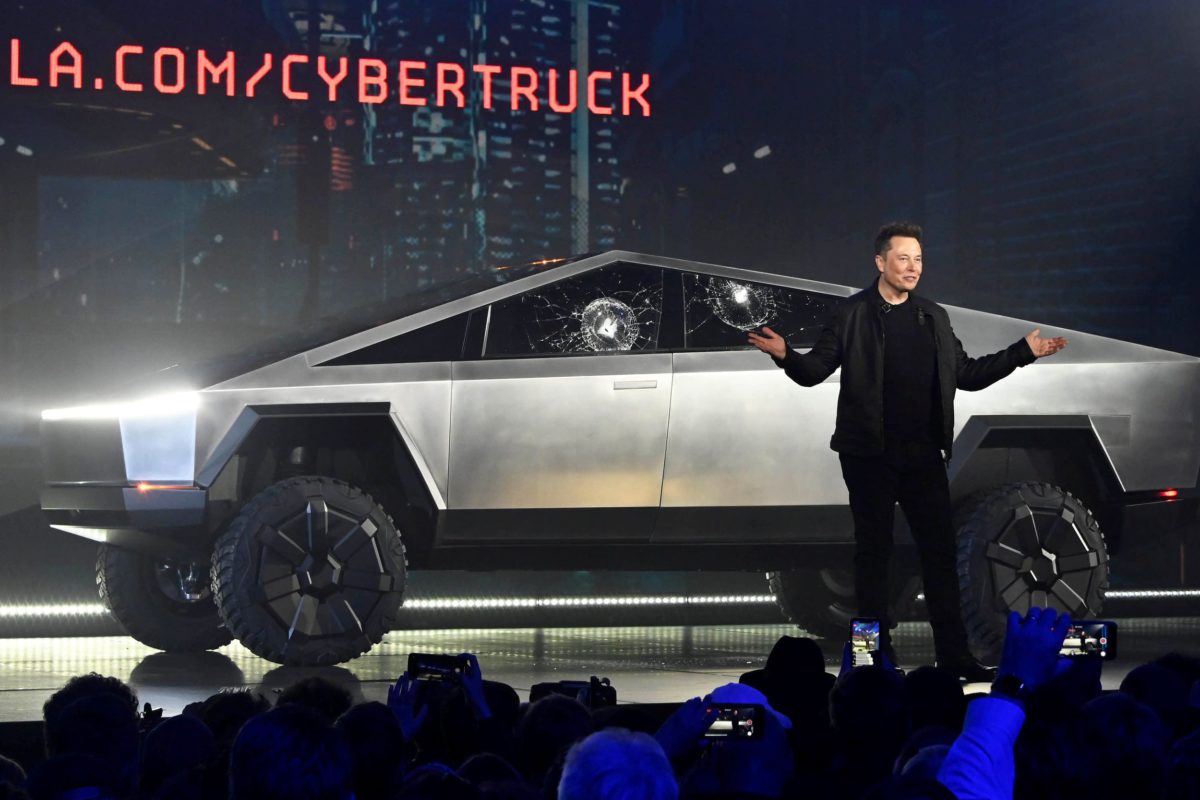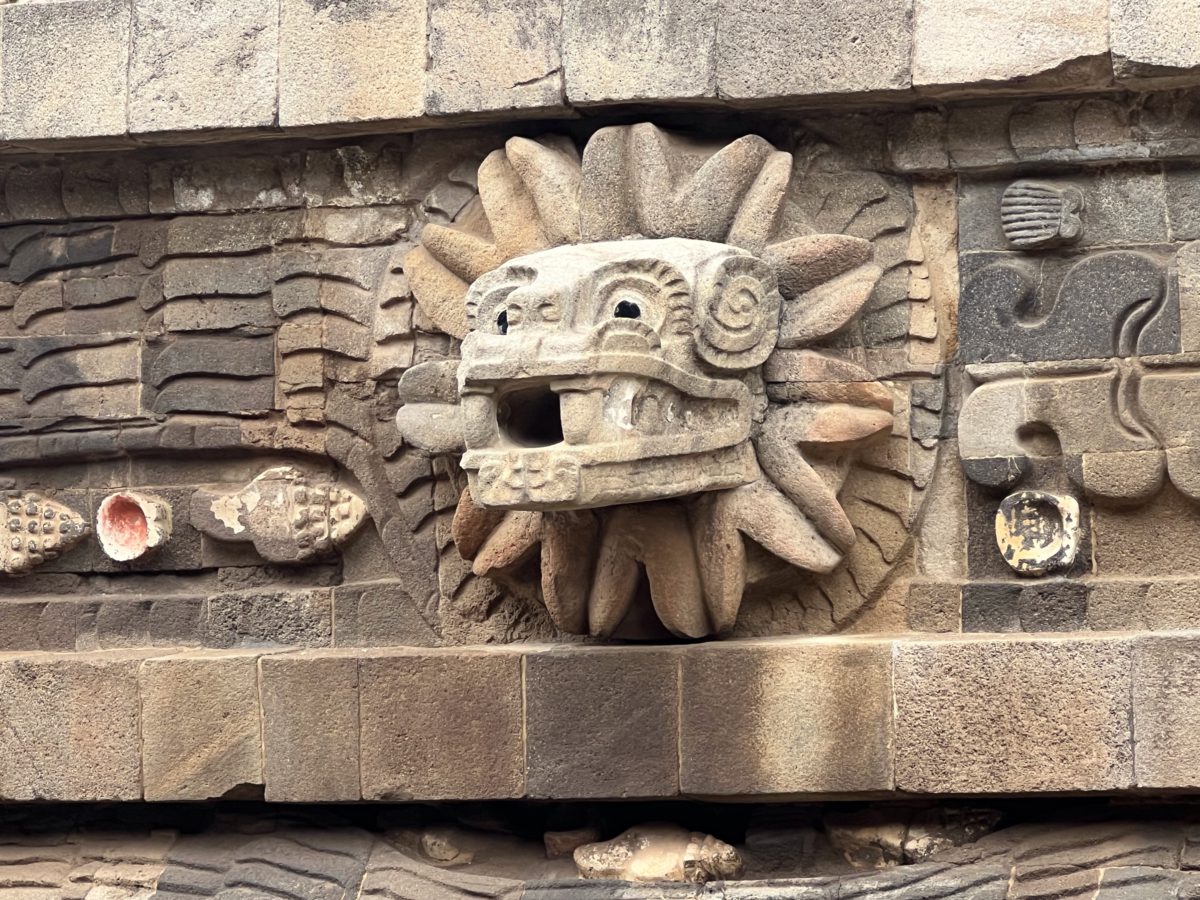
On X, a guy is attacking a Cybertruck with a baseball bat.
This is destruction as an act of devotion—shared by an account called Tesla Owners Silicon Valley. A few different men in mesh snapbacks take turns. One throws a bowling ball. Someone tries an ax and someone else tries a handgun. Another guy chisels at the car’s futuristic door with a mallet and screwdriver. And for all their hard work, the vehicular manifestation of Silicon Valley bro culture barely looks like someone keyed it in a Palo Alto parking lot. Cybertruck mastermind Elon Musk shared the video under the caption: “Other trucks look badass, Cybertruck actually is.”
It’s an oddly literal way to interpret the idea that trucks are tough. Yes, durability is one form of toughness. But when people say “My truck is tough,” they inevitably mean something more ineffable than “My truck can take a bullet.” The truck is synecdoche for an entire lifestyle where men work with their hands in small towns across rural America. It’s not that the truck is tough—it’s that the driver is tough and requires a particular vehicle in which to be tough. He bales hay, spends Sunday morning at church, and drinks longnecks sitting on the tailgate.
But Cybertruck drivers don’t buy these futuristic trucks to haul stuff (they can’t) or tow stuff (they can’t)* or even offroad (they can’t). Instead, the Cybertruck offers a bulky unibody vehicle with metallic sci-fi paneling and a massive video touchscreen. It’s perfect for the growing share of truck shoppers who say they use their “truck” for errands and commuting more than towing or hauling. The same shoppers who say they want a truck that is “modern,” “sophisticated, and “technologically advanced” more than “functional” or “reliable.” The truck’s appeal—its meaning as a consumer good—was built, at least in part, on the sexiness of a particular kind of utilitarian masculinity. But Cybertruck people aren’t truck people. Because, practicality aside, trucks are utilitarian objects of conspicuous consumption that serve to signal the driver’s identity. Chevy Silverados remain the preferred choice for country boys who haul stuff, Ford F-150s still get the most country songs, and Toyota Tacomas are favored by outdoorsy types who refer to their trucks as “rigs.”
With the triangular Cybertruck, however, we’re dealing with something else. Even its name is ill-fitting, a conceptual contradiction: “Cyber” and “truck” reach both forward and backward in time: the shiny surfaces of Silicon Valley’s contactless future meeting the utilitarian grit and endurance of America’s past.

“This is like Picasso,” Cybertruck owner Matt Holm told Texas Monthly. “When Picasso changed the language of art and started putting two eyeballs on chicks’ faces on one side, people were like, ‘This dude is r—ded, what the hell is wrong with this dude, right?’ Guess what history has decided? His art is kinda cool and valuable.” Here, Picasso is stripped of his context and leftist politics, and flattened, in a remarkable stroke of bro-speak, into a retroactive edgelord. And today, there is a kind of person who worships at the altar of provocation for provocation’s sake.
In an era when all consumer decisions are becoming increasingly politicized, the Cybertruck seems designed to piss someone off. Comparisons to a tank write themselves. And they aren’t far off the bat: the Cybertruck is a military vehicle for the culture war. Too flimsy for the Ford F-150 Republican and too encumbered by Musk’s increasingly belligerent politics for the EV Democrat, its meaning as a symbol has surpassed its meaning as a truck. With the Cybertruck, Tesla was trying to deliver a perfectly engineered concept of tomorrow.
In a review for The Autopian, David Tracy argues that the Cybertruck, with its brutalist design, delivered on that vision at the expense of build quality, maneuverability, usability, and visibility. Unlike a Model Y, it’s an identity statement precisely because it is impractical. To drive a Cybertruck is to buy into a particularly forceful techno-optomistic vision for the future. Thus, Tracy’s Cybertruck review managed to frustrate both Musk fans and haters. He followed it up with another article titled “Reviewing The Tesla Cybertruck Is Totally Pointless,” acknowledging that the culture war had swallowed the Cybertruck whole. His mistake was setting out to review it as a car, isolating it from its creator. People already love or hate Musk, which means they already love or hate the Cybertruck. That means, he explains, that “neither group is going to actually read a Cybertruck review with an open mind, making my endeavor to write one—as previously stated—thoroughly pointless.”
Architectural critic Reyner Banham wrote of the contradiction contained within brutalism—which embodied both the authoritarian state and a utopian vision of communal living. Two different shades of social engineering. The Cybertruck, inspired by sci-fi stories that Musk himself loves, imposes itself in much the same way: a forceful interjection of one man’s futuristic fantasies. To accept the Cybertruck as a truck—despite all its futuristic contradictions—is to sign on for Musk’s personal and idiosyncratic utopia, even when it overrides a collective and shared understanding of trucks. Or a collective and shared understanding of utopia.
*Editor’s Note: Nov. 10, 2024 Clarification—the Tesla Cybertruck does indeed have a hitch, hidden by a removable cover, if attempting to tow or haul is desired.




